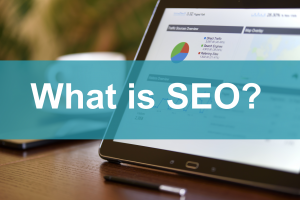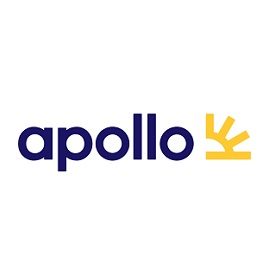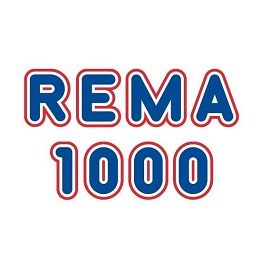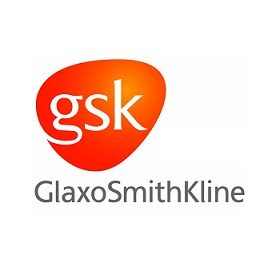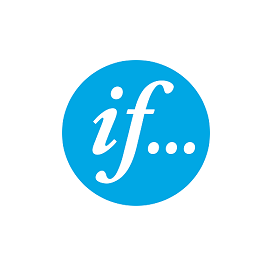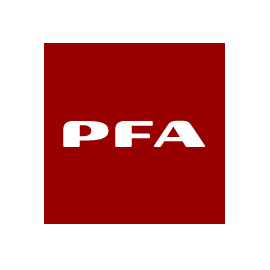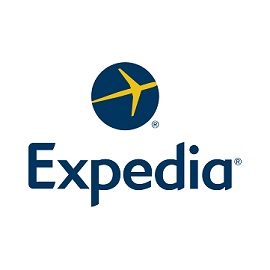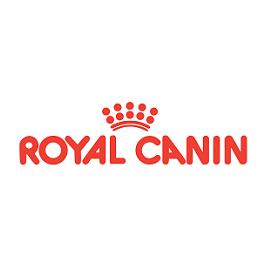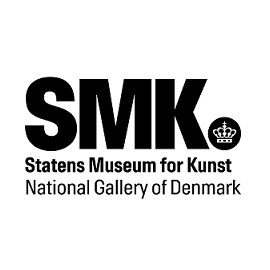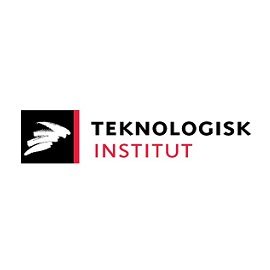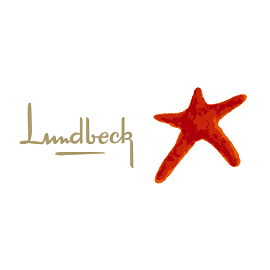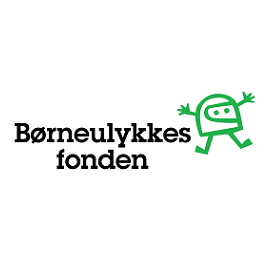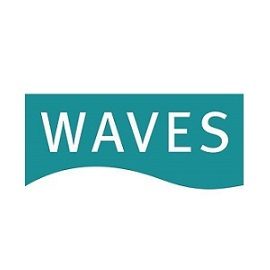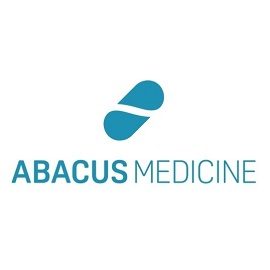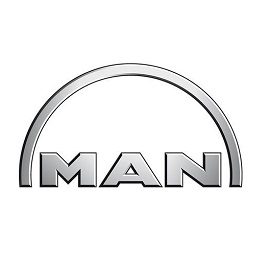While working with Search Engine Optimization you might stumble upon words that you have never seen before. Our extensive glossary was created to help you gain an overview of some of the most common expressions with a concise explanation. We hope that you find great use of this glossary and that it helps you on your journey to become a SEO expert!
301 redirect
A 301 redirect is a permanent redirection from one URL to another. It is usually the redirection best for SEO purposes as you actively inform Google and other search engines that the link juice should be transferred to the destination URL. The number 301 is one of the many status codes, which the HTTP (HyperText Transfer Protocol) can respond with after a request has been made.
302 redirect
A 302 redirect is a temporary redirection from one URL to another. By using this type of redirection you inform search engines that you don’t want to pass as much link juice to the destination URL as you would using a 301 redirection. Even though it is recommendable to use a 301 redirection in almost all cases there can be situations where a 302 redirection is the better choice. An example being if you are giving your website a thorough makeover and therefore need to shift around content.
404 error
A 404-error occurs when the webserver is not able to respond with a ressource that correlates to the query. 404 is therefore synonymous with not being able to find a page or a file. Relating to SEO it is important to keep an eye out for potential 404-errors. Even though they do not hurt your ranking directly it can have an influence on your metrics as a visitor quickly can leave your website if they are shown a 404-page instead of the content they were looking for.
500 server error
A status code of category 500 means that the webserver is unable to process queries. As an example, 500-errors can occur if the server is experiencing technical problems or if it has been shut down. Furthermore, a 500 status code tells the webmaster that the request was OK on the client side but the server was unable to respond in due time. If the server’s downtime is temporary one can use the 503 HTTP status code, which tells search engines that the website will be up and running in a short while, which indicates that the search engines should return to index the website shortly thereafter.
A/B testing
A/B testing is a way to find out which of two options is best. Two similar (with unique differences) products are tested by presenting them for different customers. After doing the testing, the logged data can be analyzed. The one with the best conversion, engagement or a similar parameter is chosen and implemented for all visitors. This kind of testing is also known as “split testing”.
Above the Fold
This expression is taken from the media world and has a very similar definition. Above the Fold refers to everything that a visitor sees immediately after landing on the website. Said in another way it is what the user sees before scrolling. The expression is therefore a part of the User Experience concerns, which one must keep in mind when a website is being designed: what should the user see immediately?
AdWords
Google Ads (previously known as Google AdWords) is Google’s own advertising service where advertisers can pay to be exposed to a relevant audience. AdWords offers services such as PPC (Pay-Per-Click) and CPA (Cost-Per-Acquisition), which is the company’s primary source of revenue. Advertisers decide on a budget for advertising and only pay if the customer clicks the ad (PPC). As the name suggests AdWords is built around keywords. Keywords have different prices depending on the search volume as well as the competition, which Google calculates using complex algorithms. If you’re in doubt how to proceed we’re always ready to help with AdWords setup, reporting as well as continuous AdWords optimization.
Algorithm
An algorithm is a sequence of actions, which are pre-determined. In the SEO world, several algorithms play a major role in how a website should be search engine optimized. Among the most popular algorithms are Google Penguin, Google Panda, Google Hummingbird as well as Google Pigeon. How these algorithms work is a trade secret, but their primary task is to catch people who attempt to exploit their way to rank one in the SERP (Search Engine Results Page).
ALT tag
The alt-tag is a part of an <img> tag in HTML code. The purpose of this tag is to describe the image using text so that search engines and vision-impaired humans know what the image represents. Search engines can only understand code, which is why it is very important to have a well-written alt text for every image for the best SEO-value. The easiest way to write an alt-text is to imagine that you have to explain the image for a blind person.
Anchor text
The anchor text is the piece of text that you can click on to go somewhere else, e.g. another part of the website. The anchor text is usually underlined and in the color blue (example), however this can be changed using CSS. It is of utmost importance to create proper anchor texts. Search engines and visitors must be able to understand the correlation between anchor text and the linked resource.
Backlink
A backlink is a link from one website to another. Backlinks are extremely important in a SEO-context, as links between websites act as a stamp of approval. If a website has many incoming links from well-known websites it will subsequently gain a higher ranking. According to Google backlinks should occur naturally without any form of manipulation, which is why one should not cheat, e.g. by paying for links.
Bing
Bing is Microsoft’s search engine. Even though it might be relatively unknown outside of America, Bing currently sits on about ~5% of the search engine market share worldwide. Search engine optimization for Bing is more or less the same as Google’s guidelines. However, there are still differences that one should keep in mind. The best way to learn about optimizing for the Bing search engine is to use Bing’s webmaster guidelines. If you are interested in advertising through Bing we recommend you visit our dedicated page about Bing Ads setup and maintenance.
Black Hat SEO
In the online world, three types of hats are well known: white hat, grey hat and black hat. This is also very true in the SEO world. Black Hat SEO is about exploiting the grey areas and loopholes, which can be found in Google’s algorithms to gain fast rankings. Using this form of SEO is very high risk, but can at the same time yield high rewards – albeit it might be for a short time. Using Black Hat SEO can lead to a website gaining page one ranking in a short time period at several search engines, but at the same time the risk of being penalized is exponentially higher compared to following all guidelines.
Blog
The internet consists of a symbiotic relationship between hyperlinks and content. A blog is a website or a part of a website where one or more persons publish content on a regular basis. Typically, the blog’s content is centered around a theme or a certain topic, where interested visitors can read along and gain knowledge. Blogs are extremely important in a SEO context as Google reward websites that regularly publish good content. This is, among other reasons, why many companies today have an online blog where they publish content that relate to their products or services.
Bounce rate
A “bounce” is defined by Google as a visitor that never moves beyond the first page while visiting. The bounce rate is calculated based on all the registered bounces divided by the amount of total visits. A high bounce rate is not necessarily a bad thing if one’s website is built upon the one-page principle. However, if your website is built upon the traditional principle of multiple HTML pages a high bounce rate is detrimental, as it suggests that the visitor leaves before having a look around on your website – a fact that could hurt your conversion or rankings.
Bridge page
Bridge Pages are a part of Black Hat SEO as they go against Google’s guidelines of giving their customers a quality-rich experience while using the search engine. Bridge Pages’ only purpose is to redirect traffic from one website to another without containing any meaningful content (besides possible spam-ads). Bridge Paging distinguishes itself from Affiliate Marketing because AM covers more aspects than just forwarding traffic. As Bridge Pages are blacklisted by Google’s search engine (and therefore will not be indexed), owners usually try to attract traffic to the Bridge Pages by imitating popular websites such as:
Yuotube.com
Fcebook.com
Gogle.com
Broken links
Broken links are something that every SEO expert constantly is looking for. A broken link is usually found within anchor texts that no longer link to a valid sub-page or resource, which result in a 404-error. A broken link can be quite detrimental for one’s ranking, as visitors quickly will leave the site if they are met by broken links instead of the content they were looking for. Fortunately, there are several tools, which help you keep an eye out for broken links. An example being www.deadlinkchecker.com.
Call-to-Action
A Call-to-Action is an expression for how websites attempt to make the visitor do something. The thought behind is usually to get the visitor to sign up for a newsletter, buy something or submit a contact form. The way CTA is done is very important, as it is through CTA that one has the opportunity to transform a visitor into a converting customer, who will help generate revenue. Taking a thorough look at one’s CTAs is therefore a key element of doing conversion rate optimization, as one can A/B test or do other tweaks to find the best converting CTAs.
Canonical tag
The canonical tag is used to inform search engines that several URLs contain the same content, which is a way to avoid being penalized for duplicate content. Using this tag is like performing a 301 redirect without actually forwarding the visitor from one URL to another. The tag can be added either in the HTML code or in the HTTP header.
Cloaking
Cloaking means to show different content dependent on whether you are being visited by a search engine or a human. This technique is usually regarded as Black Hat SEO as it can be used to exploit search engines into giving you a higher ranking than you actually deserve based on the content that the human visitor is shown.
CMS (Content Management System)
As the name suggests a CMS is used to create and edit digital content. There are many different Content Management Systems out there, but one of the most well known is WordPress. A CMS is also a very important tool when it comes to performing SEO as you can use a plugin such as Yoast in WordPress, which will help you optimize your content before it is published. If you’re already using WordPress as your CMS we recommend taking a look at WordPress SEO Optimization, as an optimized WP-site can help you achieve greater traffic.
Conversion
A conversion can be many different things, but fundamentally speaking a conversion is about making a visitor execute a specific action. If you’re interested in making your visitors sign up for a newsletter a conversion happens when a visitor presses the “Sign Up!” button for the newsletter. To reach a high conversion rate is very important as it is usually linked to generating revenue or gaining more traffic. If you wish to learn more about conversion we recommend you visit our dedicated site, where we also offer our help with conversion rate optimization.
CPA
CPA, or Cost Per Acquisition, is a price model where the advertiser pays for a certain conversion, e.g. a sale or a sign up for a newsletter. The advantage of using CPA is that the advertiser only pays for the ad when the wanted conversion happens.
CPC
CPC (Cost Per Click / Pay-Per-Click) means that the advertiser pays every time a customer clicks the ad. CPA and CPC are the two primary services, which AdWords offers.
CPM
CPM, or Cost Per Mille, is also a common way to measure expenses in regards to advertising online. CPM is based on the advertiser’s expenses per thousand visitor from the ad. CPM is especially used to compare expenses for various ad campaigns on different platforms.
Crawl
Crawling is one of the most fundamental terms in the SEO world. To crawl means that a robot (usually Googles) crawl websites by following the links throughout the internet. This is, among other reasons, why it is a great idea to create a sitemap as it eases the robot’s workload while crawling by providing an overview of the website’s design. It is also while crawling that a website’s backlink profile is checked, which is an important ranking factor.
CRO
CRO (Conversion Rate Optimization) is similar to SEO in that they are both focused on optimizing. Instead of focusing on optimization for search engines, CRO focuses on conversion optimization. The optimization is done by using analysis tools as well as user feedback. SEO and CRO usually go hand-in-hand as well executed SEO will attract a higher volume of traffic, and CRO will ensure that this traffic will be converted from passive visitors to valuable conversion, which can generate revenue for the website.
CSS
CSS (Cascading Style Sheets) is a language, which help design the visual identity of websites written in HTML. CSS and HTML work together in harmonic relation because CSS is used for the stylistic design while HTML outlines the structure and content.
CTR
CTR (Click-Through-Rate) tells about the amount of users that click on one or more links compared to the total amount of users that have seen a piece of content. As an example, CTR is frequently used to measure the effectiveness of e-mail campaigns. A mail that reaches a thousand persons can have a CTR of 10% if one hundred persons click a CTA inside the mail.
DNS (Domain Name Server)
A domain name server is what HTTP communicates with when it has to find a domain’s IP address. DNS can be compared to an encyclopedia where every website’s IP address on the internet can be found. First, HTTP checks whether the user has the domain in question in his cache (which means that the site has been visited earlier), and if this is not the case the protocol communicates with DNS to find the correct IP-address before retrieving the website.
Domain
A domain is a word for the unique address that belongs to a website. Every registered domain is added to the DNS. By using domains the user experience is more human-like, since hard to remember IP-addresses are given an easy to remember name – letting the computers do the leg work to find out which domains and IP-addresses belong together.
Duplicate content
Duplicate content is one of the things that a webmaster should avoid when content is created and published. If the same piece of content appears on the same domain two or more times it is defined as duplicate content. Duplicate content can have an influence on your website’s search rankings because Google and other search engines are not interested in presenting an identical piece of content to their customers. Furthermore, if duplicate content exists on a website it could mean that both URLs get less link juice. Duplicate content can be solved by using 30x redirection or the canonical tag.
Geo targeting
Geo targeting means to present content for users dependent on their geographical location, and it has spawned a new sub-category of optimization: local SEO. Perhaps you have experienced receiving ads from your local area while using Google or Facebook’s services. Another example being Snapchat’s geo-filters or YouTube videos that cannot be shown because you are in a certain country. Geo targeting is furthermore used in marketing campaigns where the advertiser only wants to show the content to people in certain areas.
The mother of all search engines and the main actor behind online marketing and search engine optimization. Google’s slogan “Don’t be evil” can be found between the lines in all the guidelines that the company has released since its start in 1998. Google revolutionized the internet in the early 2000s when they decided to do something about the state of the internet. At that time, the internet was similar to the Wild West in that there were no rules or guidelines for a pleasant user experience. This meant that everyone spammed their way to the top of SERP. Google released guidelines for their search engine to give their customers a pleasant experience while making sure that the right content was presented. This gave Google the position as market leader and they have kept it ever since.
Google Analytics
Analytics is a free tool that Google offers all website owners in case they are interested. Analytics is used to measure a website’s traffic and help website owners understand which kind of audience they are attracting to their site. As it is a Google service, Analytics is integrated with AdWords and the two services go hand in hand when performing one’s online marketing strategy. At Jaskov Consult we are experts in utilizing this tool and we are therefore ready to help you set up Google Analytics for your website.
Google Hummingbird
This algorithm was released in 2013. Where the Penguin and Panda changes were about de-ranking “bad” websites and exploiters, Hummingbird is focused on being able to understand context as well as synonyms in searches. This is an indirect way to improve the user experience. While being helpful for users, this update was not exactly important SEO wise compared to the two previous algorithm changes. However, long-tail keywords gained some importance because of Hummingbird, because the search engine became better at understanding the context.
Google Panda
One of Googles many changes to the algorithm, this one being released in February 2011. Panda keeps an eye out for how websites act and makes sure that websites with lacking or bad quality content receive a lower ranking than the websites with quality content. Especially “content farms” that are meant for Black Hat linkbuilding was penalized severely by Panda.
Google Penguin
The penguin changes were published in 2012 and are still feared by many Black Hat SEO experts. The purpose of the Penguin update was to worsen the rankings among the websites that did not follow Google’s Webmaster Guidelines. Penguin is continually updated by Google, which means that the algorithm keeps getting better and better at finding those who attempt to exploit their way to a better ranking.
Google Search Console
Like Google Analytics, the Google Search Console is a completely free service. Among other things, it can be used by webmasters to check whether a new page has been indexed by Google’s search engine. Furthermore, the Search Console contains many different webmaster tools which are helpful when trying to align a website according to Google’s guidelines.
Googlebot
Googlebot is Google’s own robot, which crawls websites on the internet. Googlebot follows a complex algorithm that helps it along the way when it has to find new websites as well as update “old” ones. If you do not wish to be visited by Googlebot, or just want to exclude certain parts of your website, you can use HTML-tags or robots.txt.
HTML
One of the internet’s cornerstones is HTML. Every website you visit contain HTML to some extent, and together with CSS and JavaScript the three languages compromise the foundation of why humans have such an easy time interacting with websites on the internet. It is furthermore with the help of HTML that technical SEO audits can be done, where the different HTML tags have unique Best Practices as specified by Google. These Best Practices are explained in our guide on how to do a technical analysis using the Screaming Frog SEO Spider tool.
Incoming links
As the name suggests an incoming link is a link, which points from another website to yours. It’s incoming because someone is pointing at you. Incoming links are very valuable when it comes to SEO (link building). The more of these links you have, the more trustworthiness you gain at the various search engines. As another advantage, it also lifts your organic traffic, as more readers that are curious will click the link on the external websites, thereby being forwarded to your website.
Indexing
To index a website means that Google or another search engine stores the website in their database so that the search engine quickly can retrieve relevant websites when queried. Indexation is very important; it is here that a website is made visible in SERP. Furthermore, it is also here that a great search engine optimization shows its value. If you want to avoid some sub-pages on your website being indexed using robots.txt or HTML-tags is the way to go.
Internal links
Internal links are links that point towards a ressource within the same domain. As an example, it could be links in a menu-bar, which help the visitor navigating the website, or a link in an article, which points toward another relevant article on the same domain. It can also be a CTA that attempts to create a conversion.
JavaScript
JavaScript is one of the most common scripting languages and with good reason. Together with CSS and HTML, they make up the foundation for user-friendly websites on the internet. JavaScript can manipulate HTML and CSS elements so websites have a dynamic feel at the power of the user’s input. An example being when you minimize a chat window on Facebook. JavaScript code makes sure that the window collapses and re-appears at your command.
Keyword
Keywords are the ”bread and butter” behind Google AdWords and is an important part of On-Page SEO. Keywords are words or sentences, which Google and other search engines use to match a user’s query with relevant websites or ads. Finding the best keywords requires a decent amount of research, and parameters such as competition, search volume and AdWords price can have a big impact on how well you’re going to rank on these keywords; organically as well as in ads. If you wish to learn more about how to do this, we recommend you read our guide on how to make a keyword analysis. If you want a good free tool for working with keywords, then we can recommend this free keyword wrapper tool (by the way, which we developed ourselves, and which we use a lot ourselves).
Keyword density
Keyword density is a way of expressing how many times a specific keyword appears in relation to the total amount of words in a section of text. This density of keywords is something that search engines use to find out how relevant a website is according to the user’s search query.
Keyword stuffing
Keyword stuffing is an expression for stuffing one’s website with different keywords so that the search engines get the impression that a website is extremely relevant for various keywords, which users might search for. However, Google keeps an eye out for keyword stuffing as it is classified as Black Hat SEO, and the Penguin update has led to this kind of practice being penalized quickly.
KPI
Key Performance Indicator is a very useful expression regarding everything that is involved in business. A KPI makes it possible to measure and weigh the effort for completing a specific goal empirically. By using a KPI, a company can set a goal and evaluate to what degree they are reaching this goal along the way. In an online marketing context, it could the number of conversions per month, growth in traffic or search engine ranking.
Landing page
A landing page is a single page that is presented when a visitor presses an ad or a search result. A landing page’s purpose is to heighten the chance of a conversion taking place by expanding on the amount of information the visitor initially gets from the SERP. A/B testing is usually often used for designing landing pages to make sure that you have the best possible chance for creating a conversion. First impressions matter!
Link
A link on the internet can be compared to a link in a chain. The internet is connected via these links and it is the way in which users and search engines navigate to and from various websites. When links are talked about on the internet, they are usually called “hyperlinks”. These hyperlinks are created by using HTML code where an anchor text is defined as well as the destination. The color and look of these hyperlinks can be edited by using CSS.
Link bait
Link bait is about creating content on your website that causes other websites to share your content naturally, which is also known as an earned link. Link bait is therefore not a bad thing since you usually have to create an amazing piece of content to have it act as bait. Examples of timeless content could be an encyclopedia/glossary, infographics or games/quizzes.
Link building
One of the most important disciplines in the off-site SEO world is the so-called link building. Link building is about creating links so your website’s backlink profile becomes stronger, which Google and other search engines reward by ranking you higher in the SERP. However, because Google does not want webmasters to actively manipulate the backlink profile link building is in somewhat of a grey area guideline wise. Therefore, it is quite important that you are careful while link building to avoid being punished. One of the best ways to avoid a penalty is to make sure that you are always creating quality content that creates value for visitors, and not only for the search engine robots. All of this and much more is talked about in our guide on what linkbuilding is.
Link juice
Link juice is an expression that SEO experts use among each other. When the word link juice is used, you are talking about the value that a link from a reputable website has. A do-follow link from a site such as Wikipedia or an .edu site will contain a lot of link juice while a link from a newly started website will contain almost no link juice. Furthermore, link juice is also used in regards to internal linking on one’s website. Since it is typically one’s homepage that contains the most link juice it can be a good idea to spread out this link juice by performing internal linking which transfers link juice from the homepage towards some of the more “dry” areas on one’s website.
Meta description
A meta description is an integral part of SEO-work since a great meta description helps search engines and humans understand what a single page is about. The meta description is what us humans see under the header in the SERP, which is why it is very important that it is well written within Best Practice since it works as a bait for potential visitors. Search engines decide the different Best Practices, so it is a great idea to read the guidelines before writing meta descriptions for one’s website.
Nofollow
Nofollow is an attribute, which can be added to HTML link tags so search engines are informed that you do not wish to give one, or more links a stamp of approval. By doing so you can let users share content on your platform without being responsible for any of the links (SEO wise). Examples of this are numerous, such as Facebook or online forums.
Noindex
Noindex is added as a metatag in relevant HTML documents to signal to Google and other search engines that you do not want the corresponding site to be indexed. Said with other words you hide the site from the crawlers so it does not appear in the SERP even though a user might perform a very relevant search query. However, the sites are not hidden from users that manage to find them themselves by navigating by links.
Off-Page SEO
Off-Page SEO is about optimizing a website’s ranking in the SERP by using indirect optimization techniques. This can be done by making the public aware of the website’s online presence by link building, or by being active on social media. Off-Page SEO is usually performed after On-Page SEO, as the site should be completely optimized before increasing the amount of traffic.
On-Page SEO
On-Page SEO is about optimizing a website so everything is in tip-top shape according to Google and other search engines’ guidelines. As an example that could be by making sure that the text on one’s website is readable and interesting for visitors with well-written keyword optimized text that contains precise H1-tags and a good meta description for each site. Furthermore, one can optimize technically by making sure the website design is responsive and that the website loads fast, as it is also something Google ranks after.
PageRank
PageRank is one of the ranking factors that Google uses to decide where your website should be placed in the SERP. A few years back PageRank was publicly available for everyone on the internet. The scale was defined from 0-10 and websites such as facebook.com, google.com and twitter.com had PageRanks at 9-10. Other websites generally were a bit lower depending on how many incoming links they had. Today, PageRank is hidden from the public and only Google has access to this information – but it is still an important ranking factor. PageRank is very similar to the expression “link juice” as you could “pass PageRank from one site to another” when linking.
PPC
Pay-Per-Click is one of the services, which Google AdWords offer advertisers. PPC works by letting the advertiser choose a keyword from the agreed budget where after the advertiser pays Google or another ad provider every time a visitor clicks the ad containing the keyword. Today, PPC works in two different ways. Either you pay a pre-determined price for the keyword or you enter an auction with several advertisers where the ad provider chooses the advertisers with the highest offer.
Redirect
To perform a redirection is to redirect from one resource to another. An analogy from real life could be redirecting the traffic by using road signs in case of road maintenance, either temporary or permanently. The internet’s primary communication protocol, HTTP, contains many different status codes but the two most common in regards to redirection are the so-called 301 and 302 redirects. These status codes respectively inform search engines that the resource has been moved permanently or temporarily.
Robots.txt
Robots.txt is a text file that webmasters can edit to inform search robots how to crawl and index the corresponding website. This text file is extremely useful in case a website has sections that the webmaster does not want to appear in the SERP. Besides being able to exclude sections of a website, whole URLs or certain file types you can also create different rules depending on which search crawler you are being visited by.
Script
A script is a sequence of lines of codes, which is executed by software without being compiled. By doing so scripts distinguish itself from other code languages as other languages such as Java, C and Python must be compiled by a computer before they can be used. Therefore, scripts are frequently used on the internet since browsers can run these scripts independent on the operating system. The most popular scripting language on the internet is JavaScript.
SEM
Search Engine Marketing differs from SEO since you are focused on growing your traffic based on paid ads rather than organic growth. Typically SEO and SEM are mixed together to achieve the best results. If you pay a lot of money for AdWords without having a correctly optimized website you could be wasting money since the increased traffic most likely will not result in more conversions.
SEO
Search Engine Optimization is the art of optimizing a website on many different parameters so the website’s traffic is increased organically. SEO can be done both On-Site and Off-Site. SEO is about being able to present a user-friendly interface, structuring the HTML code according to Best Practices and much more – the end goal is to make the website easy to understand and use for users as well as search engines. We have written an extensive guide on what SEO is, which provides you with the basic SEO expressions as well as tools, so that you can start optimizing your website(s).
SERP
The Search Engine Results Page is what is shown on search engines after a user has input one or more keywords. Besides containing the organic search results, a SERP will typically also contain one or more ads above the organic results to bait the customers into clicking these first. Statistics show that users are more likely to click the first three organic results, which is why SEO is such an important part of every serious website.
Sitelinks
Sitelinks is an important indicator of trustworthiness as it is not something you can add yourself. Instead, sitelinks are only added if the Google algorithm deems you worthy. To have sitelinks added to the SERP requires your website containing a certain amount of traffic so the algorithm can collect enough data about which sitelinks to show. Sitelinks are added according to what Google believe will save their users the most time – as an example, a restaurant might have a sitelink for booking a table in the SERP.
Sitemap
A sitemap is to both help users as well as search robots even though they are typically only used while a robot is crawling. The sitemap shows all pages on a website as well as the relation between them, which help robots understand how a website is designed. Fortunately, you do not have to create a sitemap manually if you own a website. Google offers a page with tools that do the hard work for you.
SMM
Social Media Marketing is one of the marketing strategies that in recent years has won a lot of traction as social media continues to grow and play a larger part in our everyday lives. SMM is usually used as an Off-Site SEO technique because you are trying to attract visitors externally. A majority of active users on the internet can be found on websites such as Facebook, Instagram, Twitter and YouTube. It is therefore a great idea to be active on these by publishing content regularly and interacting with the fan base.
Search Engine
Search engines have been used ever since the Internet was created. During the lifetime of the Internet, search engines have become much more complex and intelligent, but a search engine’s core objective is to respond to search queries as accurately as possible. A search engine does this by using complex algorithms that use several parameters to match context and keywords with the indexed websites in its database. This is exactly why it’s so important to have done a thorough keyword research to know how to aim your content at the right customer segment. If you help Google and other search engines understand your website better, they will present your website to customers who have an interest in visiting.
Technical SEO
Technical SEO is about optimizing what happens between website and search engine. While performing technical SEO you optimize the HTML code as well as loading speeds so that the search engine has an easier time retrieving relevant information about the site that is being visited. By performing technical SEO, you also indirectly optimize for the humans as the search engines easier can match your website to the users relevant queries, which most likely increases your organic traffic. Typically, technical SEO is done by using one or more tools. These tools usually generate an automated report which enables you to check off the optimization points as you go through it. At Jaskov Consult we go above and beyond by performing a manual technical SEO analysis in addition to the automated report. We do this to make sure that there’s a complete technical health report of the website. We usually use the Screaming Frog SEO Spider tool, which we have also used to write a guide on how to do a technical SEO analysis.
Title tag
A title tag indicates the title of a page and is simultaneously what is shown in the SERP together with the URL and the meta description. Optimizing your title tag after Best Practice is therefore extremely important, as the title tag is supposed to be an accurate description of what the page contains.
Outgoing link
An outgoing link is a link away from the website or ressource one is currently visiting. To have a strong back link profile is not just about having many incoming links. Google and other search engines also want websites to link out to other websites as it gives off the impression of an organic link profile that has not been manipulated. When you create an outgoing link from your website to another you must decide whether to make it a do-follow or a no-follow. If you create a do-follow, some of your website’s link juice (or hidden PageRank) will be transferred to the destination. Websites such as Facebook uses nofollow for all user created links, as they do not want to give any authority to these.
URL
An URL is an acronym for Uniform Resource Locator. An URL refers to a specific location on a network and the most common URL syntax looks like this: https://www.example.com/, where http is the protocol and www.example.com is the domain one wants to visit.
White Hat SEO
White Hat SEO is strictly about following and complying with the guidelines that has been published by the search engines. Furthermore, white hats have a greater focus on the user experience without any attempt to manipulate rankings by controversial methods. White Hat SEO is the slowest way of creating organic growth, but it is also the safest.





